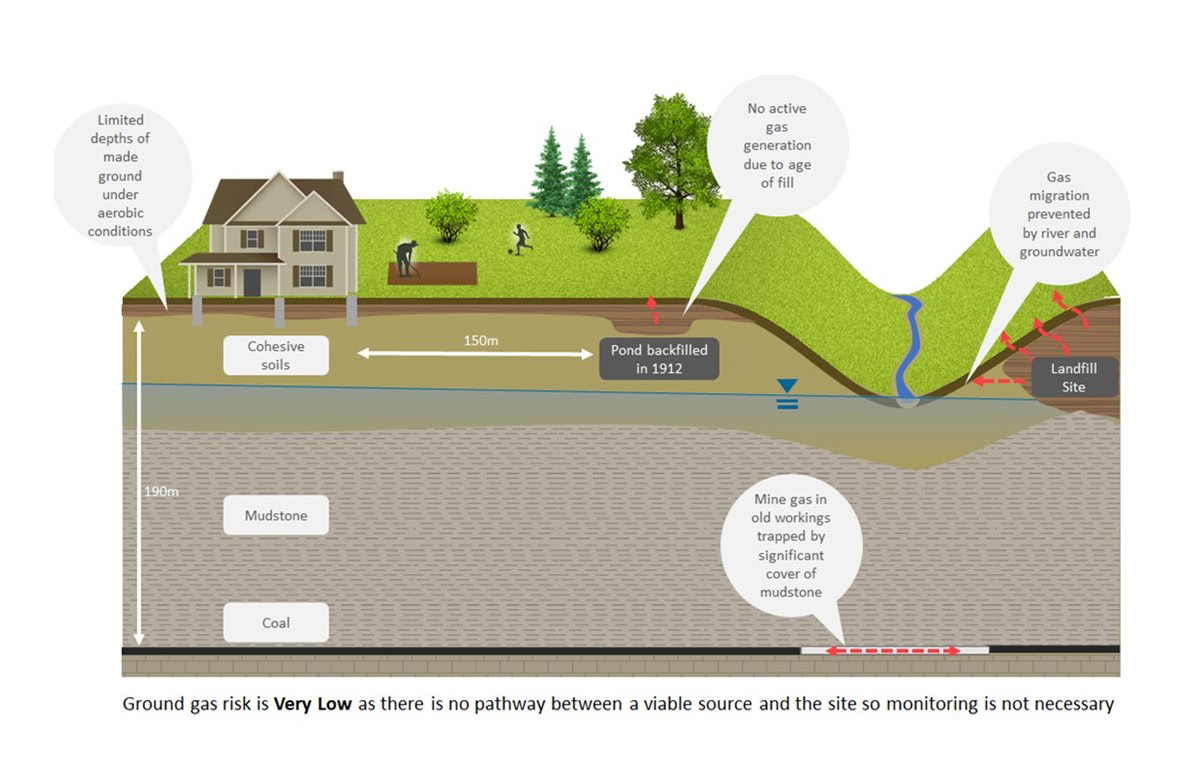
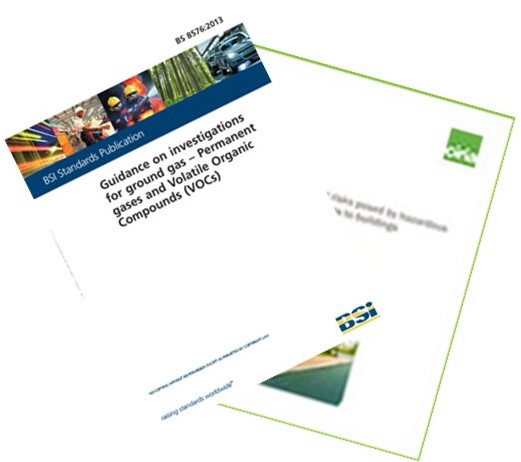
The risk presented by high rates of hazardous ground gas emissions into structures is well documented and means of monitoring and assessing this risk are set out in both BS 8576:20131 and CIRIA C6652. The number of properties across the UK that are affected by such hazardous gas emissions is however low and since the Luscoe3 explosion in 1986, which resulted from a fairly unique set of circumstances, there have been only a few instances of hazardous ground gas emissions resulting in property damage or injury and almost all of these have been related to recently capped landfill sites in fractured rock or to shallow mining. The vast majority of new properties are not located in such high risk areas and are not affected by hazardous ground gases and so do not require ground gas mitigation measures. However, despite the lack of any meaningful ground gas risk, a significant number of development sites are being unnecessarily monitored and new buildings are being constructed with the inclusion of superfluous ground gas exclusion measures, such as membranes and sub-slab venting.
All too often needless monitoring has become a requirement of the Local Authority to satisfy inappropriate 'off the shelf' or 'cover all' planning conditions. Furthermore, Local Authority Contaminated Land officers appear to often expect ground investigations to include 'precautionary monitoring' on the basis that, even where it provides no technically based benefit, it is often carried out 'as standard' or as a means of reducing a non-existent 'perceived' risk. Some Local Authorities justify such unjustified monitoring on the basis that elevated ground gas concentrations have previously been measured within the borough, despite there being no identified landfills, areas of filled ground or potential sources. This ignores the likelihood that the gases could have originated from leaking sewers or gas mains which consequently are not identified and continue to leak and present a localised gas risk to all the surrounding properties, not just the one being developed.
Unnecessary rounds of gas monitoring or gas exclusion measures generally result from a lack of a sufficiently robust desk study to demonstrate that such measures are not required. Gas exclusion measures are all too often installed on the basis of questionable ground gas monitoring results or quite frequently because developers do not have time to carry out a sufficient programme of ground gas monitoring, to confirm that such measures are not required.
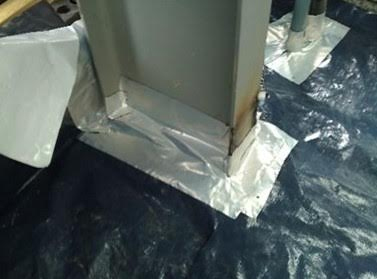
It would be possible to significantly reduce if not eliminate ground gas risk through the compulsory inclusion of ground gas exclusion measures. Whilst this may be appropriate in areas of high risk, such as where shallow gas-bearing mine workings are known to exist, it would not be necessary on the vast majority of sites. Such unnecessary inclusion of gas venting and membranes would not only increase building costs and construction programmes, but would also have a notable impact on the sustainability of such developments. All ground gas exclusion membranes currently available in the UK are formed from virgin polymers and these are highly unlikely to be recycled when the property is demolished. Furthermore, the greenhouse gas footprint resulting from the production of these polymers would not be insignificant were they to be installed by default in all new homes. HDPE has a carbon footprint of 1.60 kg CO2/kg polyethylene (4 ICE, 2008), so a typical 2000 gauge HDPE membrane with a density of 0.45 kg/m2 over the footprint of a typical UK house5 of 50m2 will result in the release of an equivalent of approximately 36kg of CO2 per house. At the 2019 figure of 188,000 completed new houses6 that equates to an equivalent of approximately 6,768,000 kg of CO2 or around 40,000,000 km of emissions from petrol vehicles averaging 40mpg each year7.
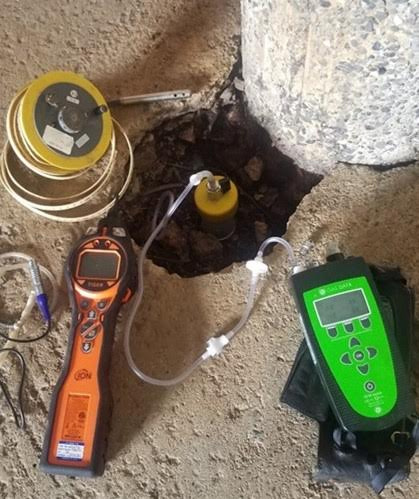
Ground gas monitoring represents a moderate cost in terms of the overall ground investigation budget, but can significantly extend the period that it will take to complete the investigation and, on most sites, it will prove to have been unnecessary. Reducing this time period by only carrying out one or two rounds of gas monitoring is unjustified, as either the risk is negligible or very low - such that no monitoring is required- or it is sufficiently high to justify monitoring, at which point the programme of monitoring needs to be sufficient to reduce the uncertainty and allow a valid ground gas risk assessment to be carried out.
In 1985 Pecksen8 stated that 'in order to determine whether an investigation for methane is necessary, it is essential to obtain as much information as possible on previous site use and site geology. This can save considerable time and possible expenditure on unnecessary investigations, but more importantly assists in determining the extent and form of any investigation required'. Both BS 8576 and CIRIA C665 reports reiterate the sentiment that in order to complete a ground gas assessment, it is necessary to understand the potential sources of gas in and around a site as well as to understand the geology and likely preferential pathways on the site and in the surrounding ground as well as the hydrogeological regime. There is therefore a requirement for an assessment of the potential for there to be a ground gas risk on all sites; however, on the majority of sites it is likely that this assessment can be based solely on a thorough desk study and understanding of the on and off-site sources, the motive forces that could drive on to site migration and the pathways through which such migration could occur. This desk study-based information should be drawn together in the formulation of a detailed conceptual site model (CSM) which should ideally be based upon a cross-section, such as the examples provided in BS 8576. An assessment of the viability of a gas risk can then be carried out and in the light of this the decision can be made as to whether or not gas monitoring is necessary. Should the assessment indicate that there are no viable gas sources or pathways linking them to the site then the ground gas risk can be regarded as being negligible or very low and as such ground gas monitoring would not be required at the site.
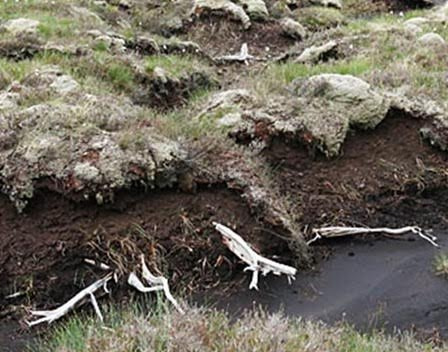
Hazardous ground gases largely originate from the biodegradation of organic matter in the ground, be it recently placed made ground or a landfill. However, methanogenesis is a highly energy inefficient process and will only occur once all of the more energetically favourable degradation pathways have been exhausted. If oxygen is present or if electron acceptors such as sulphate, nitrate or ferric iron are present, aerobic degradation will always occur in preference to methanogenesis. Methanogenesis can only degrade simple organic molecules and compounds that can be hydrolysed down to these simple compounds. This is evident from the preservation of bog oaks, leather and clothed bronze age bodies in peat deposits. Therefore, for a fill deposit to be a source of methane generation, it must be anaerobic and of a relatively recent origin and it must contain a moderate to high organic content. Typically soils within 1m to 3m of a permeable surface remain aerobic through the diffusion of oxygen from the air, meaning that such limited depths of made ground are unlikely to be a source of methane unless they are saturated or sealed from the surface. The CL:AIRE Research Bulletin RB179 provides a framework for assessing the scale of the ground gas risk based on the organic content of the soil following a forensic description of its content.
Other potential gas sources include areas of hydrocarbon contamination that can become anaerobic and degrade to produce methane and carbon dioxide or the migration of leachate with a high organic content. Volatile organic compounds (VOCs) can also represent a ground gas risk upon degradation or a toxic, flammable or explosive risk in themselves and the significance of their presence should always be investigated where identified. Fortunately, most VOCs are highly odorous and can be detected by the human nose at very low concentrations (1.5ppm to 5ppm for benzene10, 28 for TCE11) or onsite through the use of portable equipment such as a photo-ionisation detector (PID).
Older landfills and areas of ground filled prior to around 1950 are unlikely to be actively generating landfill gas, although they may still contain pockets of trapped methane and carbon dioxide. Natural deposits of alluvium and peat may similarly contain trapped methane and carbon dioxide, but as such old deposits are not actively generating gas, there will be no motive force to drive migration and the volumes that may be released following disturbance are unlikely to be sufficient to pose a ground gas risk in all but the short or immediate term.
Geological sources of ground gas such as coal or organic mudstones are less likely to represent a ground gas risk, except where a man-made pathway such as shallow mine workings are present. Chalk will liberate carbon dioxide through the reaction with acidic rainwater, but the volumes of carbon dioxide produced are highly unlikely to be sufficient to pose a ground gas risk.
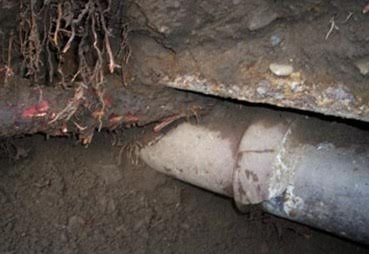
Perhaps the most common hazardous ground gas source for urban developments are leaking sewers and gas mains. These sources are often localised and can produce significant volumes of ground gas but are often overlooked. The source of the gases can be readily identified through microbial and chemical analysis of the groundwater or gas chromatography of the gas. As the risks associated with such leaks are best addressed through fixing the leak, as opposed to installing gas exclusion measures, an investigation of the origin of unexplained gas, particularly within urban areas should always be considered.
Leachate of a high organic content can represent a source of methane in itself, but methane in solution is unlikely to represent a significant source of ground gas, except under highly unusual circumstances, such as occurred at Abbeystead in 198412 where the gas has been dissolved to high concentrations under pressure and dissolution occurred as a result of pressure relief in the immediate vicinity of the site. Under normal conditions, the maximum solubility of methane in water is in the order of 20mg/l to 30mg/l and BGS13 research indicates in groundwater it is typically less than 0.5mg/l. Therefore, at the regular hydraulic conductivity values found in granular soils and under typical hydraulic gradients, groundwater flows would be less than 1m3/day which would not be sufficient to deliver a critical volume of methane below a property. A hazardous concentration could therefore not develop even if total dissolution of maximum solubility values occurred below a property, prior to it being vented by the standard number of air changes per hour required under the Building Regulations. In fact it can be demonstrated that even where groundwater saturated with methane, flowing through a sandy gravel, releases its entire methane load below a 1m by 2m by 2.4m high sealed room without any ventilation, that it would take over 40 days for an explosive concentration to develop. Methane dissolution risk is thus unlikely to be significant at most development sites in the UK.
For hazardous ground gas to migrate from an off-site source onto a site there must be a viable permeable pathway above the groundwater, but this pathway must not be so close to the surface for the migrating gases to be vented, or be lost through diffusion or dilution. The further from the source or the lower the permeability of the pathway, the less viable the pathway is likely to be. However, when considering potential migration pathways, the potential for anthropic pathways to be present should always be considered. Service runs laid in bedding gravel and capped with tarmac or concrete can provide a preferential pathway directly or indirectly from a source to the site and these may provide a far more significant pathway than the natural shallow soils.
When assessing potential migration pathways, the post-development situation should always be considered, as permeable surfaces that are currently allowing any migrating gas to vent to the atmosphere may be sealed by roads and floor slabs or permeable soils may be buried below low permeability fill materials, increasing the potential for migration. Alternatively, capping layers may be removed or the soils above the migration route excavated to allow gases that were migrating towards the site to vent, so that following development they may no longer pose a risk.
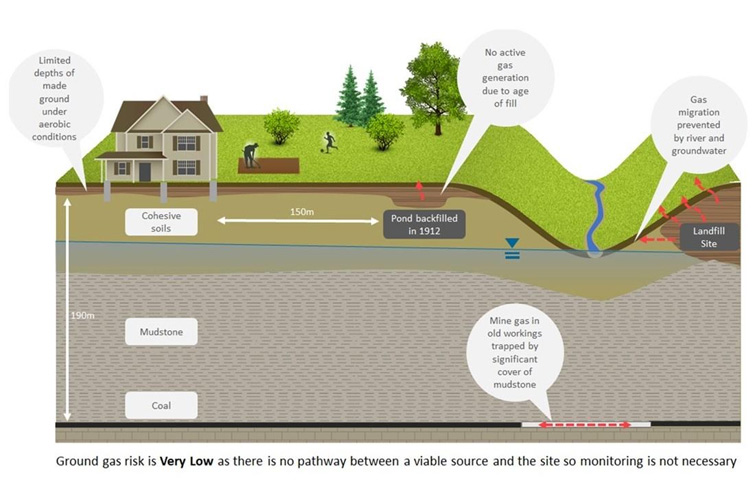
At all sites the ground gas risk should be evaluated, and this evaluation should initially take the form of a desk study and the development of a robust CSM to identify the likely potential sources of ground gas on-site and of the viability of any migration pathways to potential off-site sources in its vicinity. Where the desk-based CSM indicates that no viable sources and pathways exist, the ground gas risk can be assessed as being very low or negligible and there is therefore, no need for any ground gas monitoring. The CSM should be reviewed in the light of the intrusive investigation and on the basis of the soils exposed during the groundworks and if additional sources or pathways are revealed the CSM should be reviewed and updated, and the ground gas risk re-assessed to see if monitoring would be beneficial in the light of the new information.
______________
1BS 8576:2013 Guidance on investigations for ground gas – Permanent gases and Volatile Organic Compounds
2CIRIA C665 Assessing risks posed by hazardous ground gases to buildings 2007
3Williams G. M. and Aitkenhead N. Lessons from Loscoe: the uncontrolled migration of landfill gas QJEG 24, 191-207, 1 May 1991
4Hammond, G. and C. Jones (2008), "Inventory of Carbon and Energy (ICE), Version 1.6a
5LABC https://www.labc.co.uk/news/what-average-house-size-uk
6NHBC home statistics review 2019 assuming 80% of new homes are registered with NHBC
7Based on a petrol-engined car that does 40mpg having a CO2 emissions of 169g/km https://www.eta.co.uk/2010/02/22/calculating-a-cars-co2-emissions-from-its-mpg/
8Pecksen G. N. Methane and the Development of Derelict Land London Environmental Supplement No 13 Sept 1985
9CL:AIRE RB17 A pragmatic Approach to Ground Gas Risk Assessment Nov 2012
10The US National Institute for Occupational Safety and Health (NIOSH) Emergency Response Safety and Health Database
11Amoore. J.E. & Hautala.E Odor as an aid to chemical safety: Odor thresholds compared with threshold limit values and volatilities for 214 industrial chemicals in air and water dilution. Journal of Applied Toxicology, 3(6):272-290. 1983.
12HSE Abbeystead explosion : a report of the investigation by the Health and Safety Executive into the explosion on 23 May 1984 at the valve house of the Lune / Wyre Water Transfer Scheme at Abbeystead 1985
13Gooddy, D.; Darling, G. 'The potential for methane emissions from groundwaters of the UK' Science of the Total Environment, 339. 117-126 BGS 2008
Related News
April 11, 2023
by Juliet Fuller
We worked with Mason Navarro Pledge and client The Bedford Estates to redevelop a site in Bloomsbury at the corner of Ridgmount Street and Store Street.
February 10, 2023
by Martin Cooper & Matthew Penfold
The senior engineers at GEA all have many years of varied experience in ground engineering. That experience can affect outcomes in ways that are obvious, but also in other ways that might be less apparent.
November 11, 2022
by Harry Hooper
How did I get into the ground engineering industry? I was originally planning a career in an entirely different field of work, and engineering geology/geotechnical engineering isn't particularly a well-known career. It is one that I didn't even know existed! However, after having a conversation with a neighbour, who explained the career that they had as a civil engineer turned geotechnical engineer, describing the roles they had in projects in the UK and around the world! I was inspired to see how I could get into this profession. I recall having a phone call with Nick Koor (course lead for BEng Engineering Geology and Geotechnics) from the University of Portsmouth, and after a long discussion about the degree and its career prospects, Nick offered me a place which I accepted straight away!
April 28, 2021
by Steve Branch
Donald Rumsfeld's "known knowns, known unknowns and unknown unknowns" phrase has become quite a favourite in presentations by geotechnical engineers...